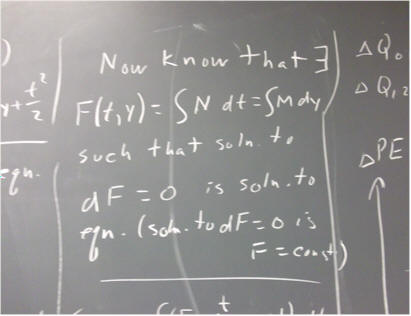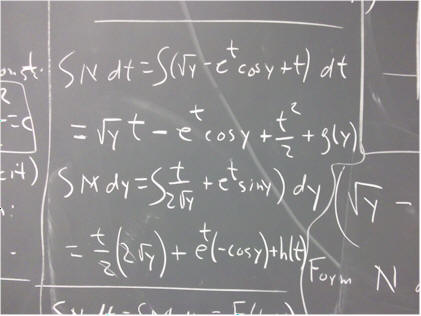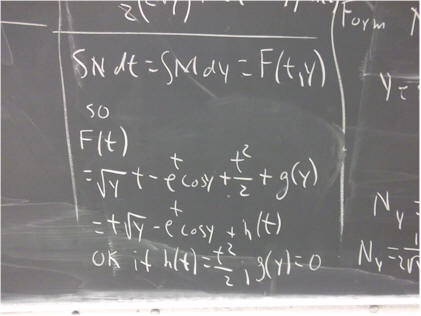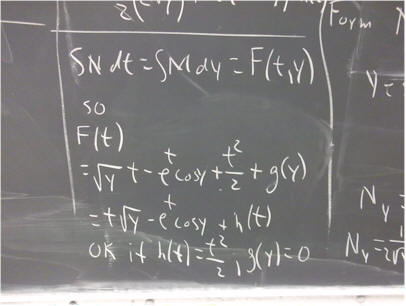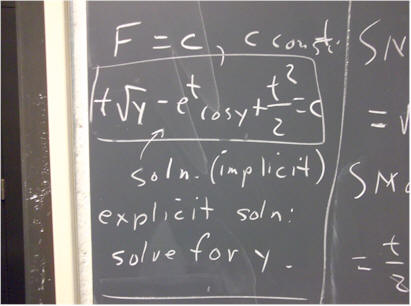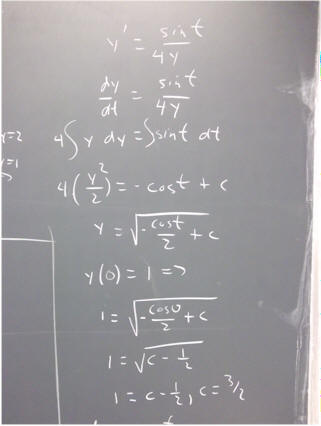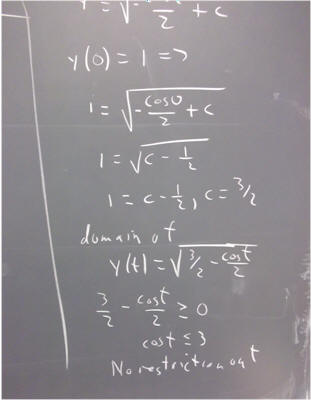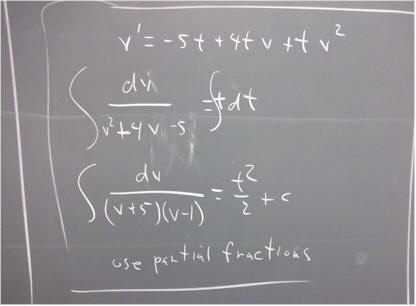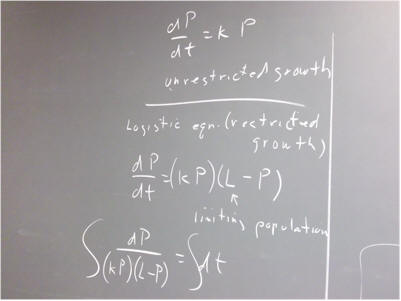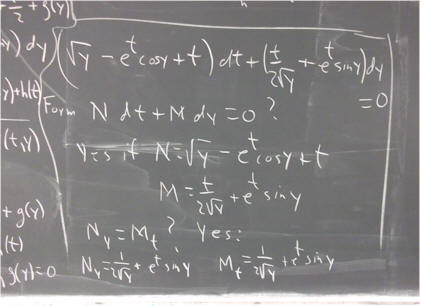
110209 differential equations
`q006. Show that the equation
( sqrt(y) - e^t cos(y) + t ) dt + (t / (2 sqrt(y) )+ e^t sin(y)) dy = 0
is of the form
N dt + M dy = 0, with N_y = M_t.
****
#$&*
Integrate N with respect to t, recalling that since y is treated as a constant, the integration constant can be any function f(y).
****
#$&*
Integrate M with respect to y, recalling that since t is treated as a constant, the integration constant can be any function g(t).
****
#$&*
Show that these integrals can be made equal by making a good choice of f(y) and g(t).
****
#$&*
Let F(t, y) be the common integral of the two functions.
Show that our equation is of the form dF = 0.
****
#$&*
Argue that the solution is therefore of the form F(t, y) = c, for a constant c.
****
#$&*
`q001. Solve the equation
y ' = sin(t) / y, y(0) = 1.
****
#$&*
Over what region(s) of the plane does the existence theorem apply?
****
#$&*
What is the domain of your solution?
****
#$&*
`q002. In general air resistance has components which depend on v and to v^2, where v is the velocity of an object. If v ' = -5 t + 4 t v + t v^2, what is the solution of the equation for which v(0) = 10?
****
#$&*
Over what t interval can we expect this solution to exist?
****
#$&*
`q003. Show that the equation
2 y tan(t) dy + (y^2 tan(t) sec (t) + 1 / (2 sqrt(t) ) dt = 0
is of the form M dy + N dt = 0, with M_t = N_y.
****
#$&*
Integrate to find the function F(t, y) for which F_t = N, and F_y = M.
****
#$&*
`q004. Consider the equation y ' + p(t) y = q(t) y^3.
Let v(t) = y(t)^m, where the value of m has yet to be determined.
What is dv/dt?
****
#$&*
What therefore is dy/dt in terms of v and dv/dt?
****
#$&*
What is y in terms of v?
****
#$&*
Rewrite the original equation in terms of p(t), q(t), v and dv/dt.
****
#$&*
Choose m so that the v in the right-hand side has power 0.
****
#$&*
Now the equation is linear nonhomogeneous order 1.
`q What integrating factor allows us to solve the equation?
****
#$&*
NOTE: This is an example of a Bernoulli Equation, which is of the form
y ' + p(t) y = q(t) y^n.
This equation differs from a first-order linear homogeneous equation by the factor y^n on the right-hand side.
The general method is to change the variable to v = y^m, then choose the value of m that makes the equation linear.
`q005. A population function P(t) satisfies dP/dt = k P, as long as space and resources are unlimited. That is, the rate of growth is proportional to the population.
If, however, the population grows too much, it approaches the carrying capacity L of its environment, and its rate of growth becomes also proportional to (L - P). Thus the rate of population growth is jointly proportional to P and (L - P).
This gives us the equation
dP/dt = k P ( L - P ).
****
#$&*
This equation is separable. Find its general solution. You will need to use partial fractions.
****
#$&*
If L = 1000, P(0) = 100 and P(1) = 200, what is the value of k?
****
#$&*

